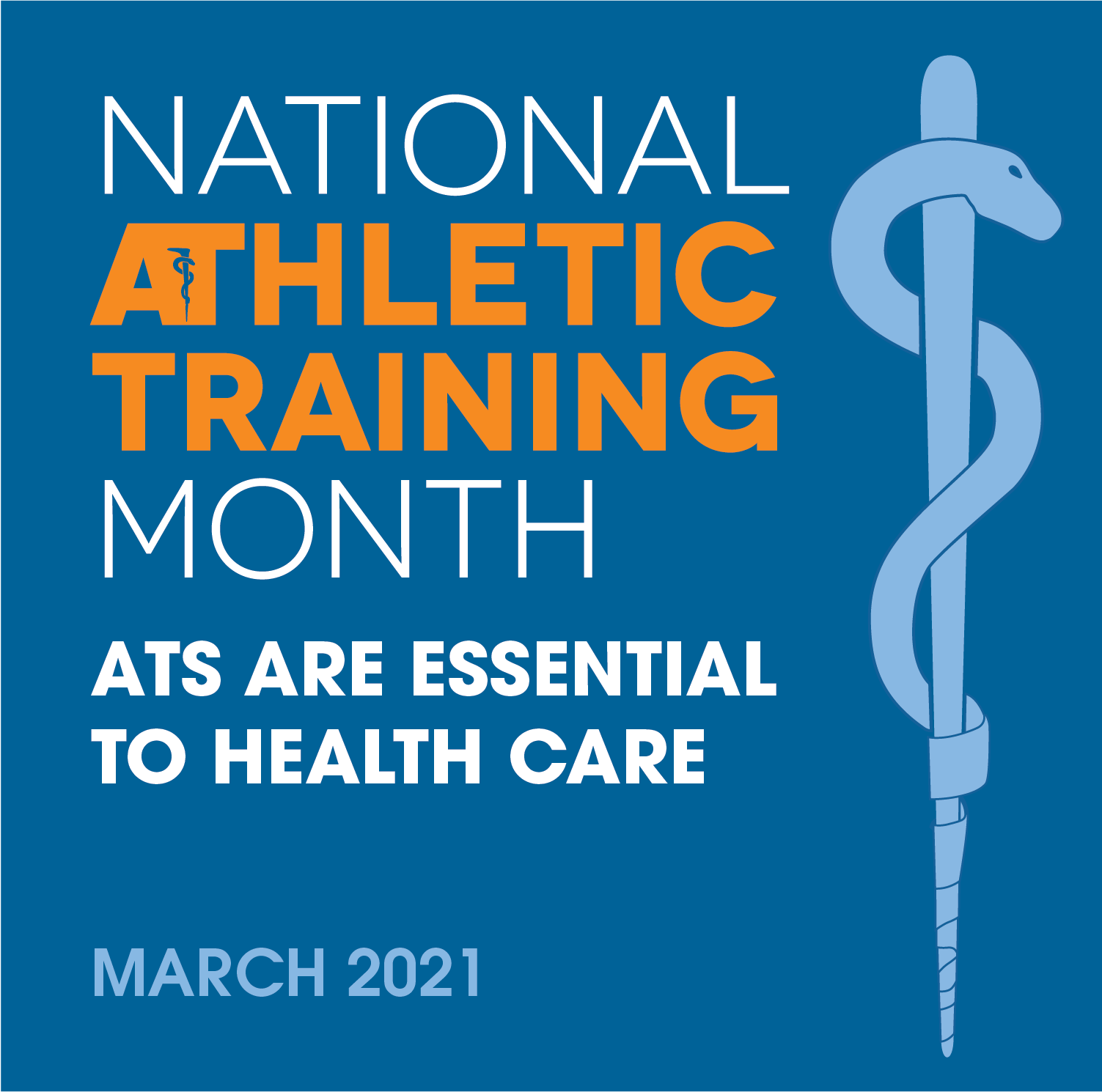Are you ready for March Madness?
Every March our family spends many hours watching high school boys’ and girls’ state basketball tournament games, and we greatly enjoy both the men’s and women’s NCAA tournaments.
March is also Women’s History Month and National Athletic Training Month.
Since I have a daughter who is an athletic trainer, I’d like to send you into March thinking about the health care providers who are not recognized as often as they should be, particularly during a pandemic.
What do athletic trainers do?
In ordinary times, when people aren’t sitting six feet apart, you can spot the athletic trainers wearing dressy clothes, sitting at the end of the team bench. During outdoor games they wear khakis and polo shirts. As emergency responders, they take care of injuries during the game—everything from cuts and sprains to concussions and other game-ending injuries.
What we don’t see is what happens before and after games, practices and seasons. The team athletic trainer helps athletes year-round. They rehabilitate injuries, treat chronic pain and are often the first to recognize mental health concerns in their athletes. They take their athletes to doctor appointments and accompany them to surgeries. They take emergency phone calls at all hours. And they document everything they do in the athlete’s medical record.
Athletic trainers are the ones who deliver the bad news to coaches that a player’s injury will keep them out a few weeks or that they are not going to be ready for the next game.
Athletic trainers also implement injury prevention programs to help athletes avoid the prospect of serious injury and a lengthy rehabilitation.
In the year since the pandemic started, athletic trainers have taken on the additional duties of testing and monitoring athletes for the illness and ensuring it is safe for those who contract COVID-19 to return to sport. Many athletic trainers schedule the follow-up tests and appointments (for ECGs, echocardiograms, cardiac MRIs, etc.) to clear the returning athletes. Some are also responsible for contact tracing. They follow strict protocols, but like all front-line workers know they and their families at increased risk of infection.
How do you become an athletic trainer?
Because of their name, athletic trainers are often confused with personal trainers who help people achieve their health and fitness goals. Athletic trainers are health care providers who prevent, treat and rehabilitate injuries.
Undergraduate programs are difficult and include courses in anatomy, physiology and kinesiology. Athletic trainers learn where and how our nerves, muscles, tendons, bones and ligaments work together in movement. They learn the impacts of injury and how to mend the body. Many master’s degree students work with cadavers so they can see exactly how our bodies are put together.
Before they can go to work, athletic trainers must complete an entry level athletic training education program accredited by the Commission on Accreditation of Athletic Training Education (CAATE) and pass the national Board of Certification exam, as well as complete any state licensing requirements. As the need for athletic trainers increases and injuries become more serious and frequent, soon all will be required to have a master’s degree. They are also required to complete 50 hours of continuing education every two years.
Where do athletic trainers work?
Athletic trainers are most visibly employed in professional and college sports, but they also work for health care systems that assign them to area high school teams. In some areas of the U.S. high schools are required to have an athletic trainer on staff who may also teach a basic sports medicine class for high school students.
Some athletic trainers work in clinics, and many employers hire athletic trainers to prevent and treat employee injuries. They also work in the performing arts, public safety and U.S. military.
Other athletic trainers conduct research to find new ways of preventing and treating sports injuries. Or they become teachers for the next generation of athletic trainers.
Essential to health care
Athletic trainers put in long hours and the work is challenging. And they are rarely recognized. But that’s not why they do the job. They do it because they care about their athletes.
The athletic events so many of us enjoy focus on the players and coaches. The referees, scorekeepers and clock managers help facilitate the game. But the athletic trainers help athletes stay on the court, get back on the field or return to the pool.
They are essential to the team, and as the 2021 National Athletic Training Month slogan says, they are “Essential to Health Care.”
Read more
How athletic trainers support safe youth sports
Explore the athletic training profession
Disclaimer: I am not a medical professional. Statements are based on personal experience, credible news articles and medical resources. My intention is to raise awareness. Please learn more and discuss questions and concerns with your family's physician.

